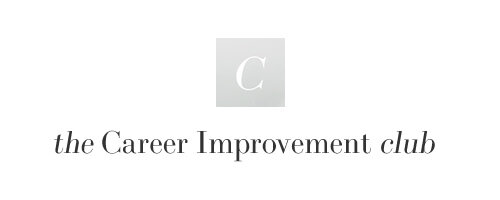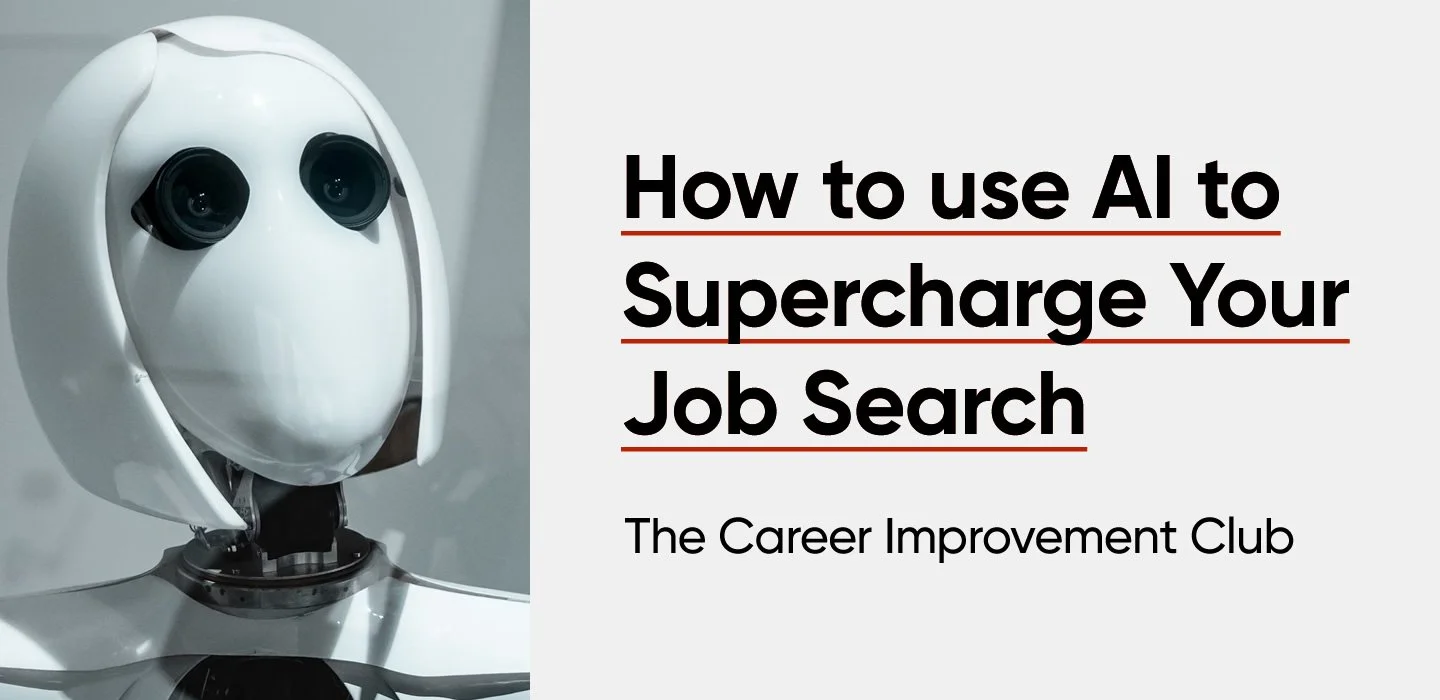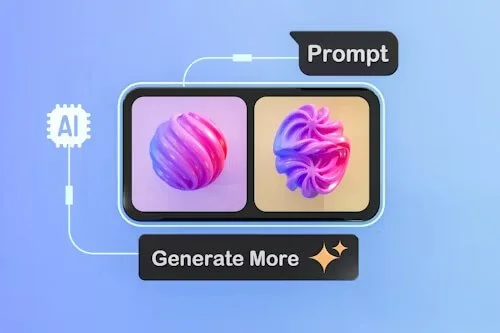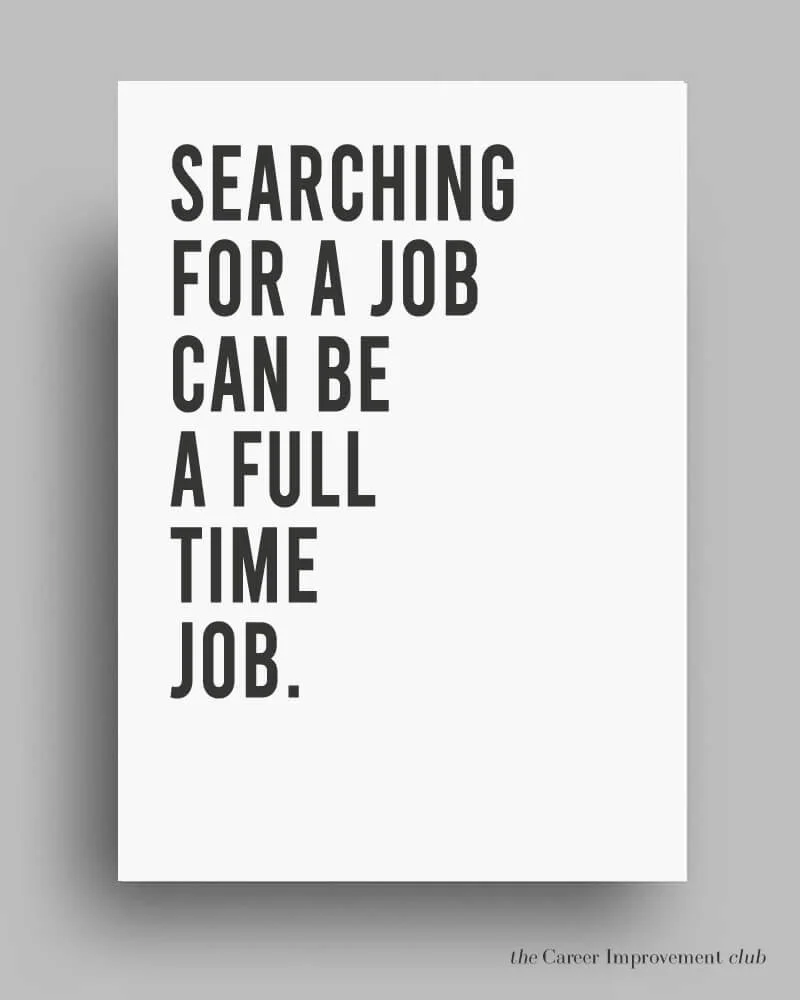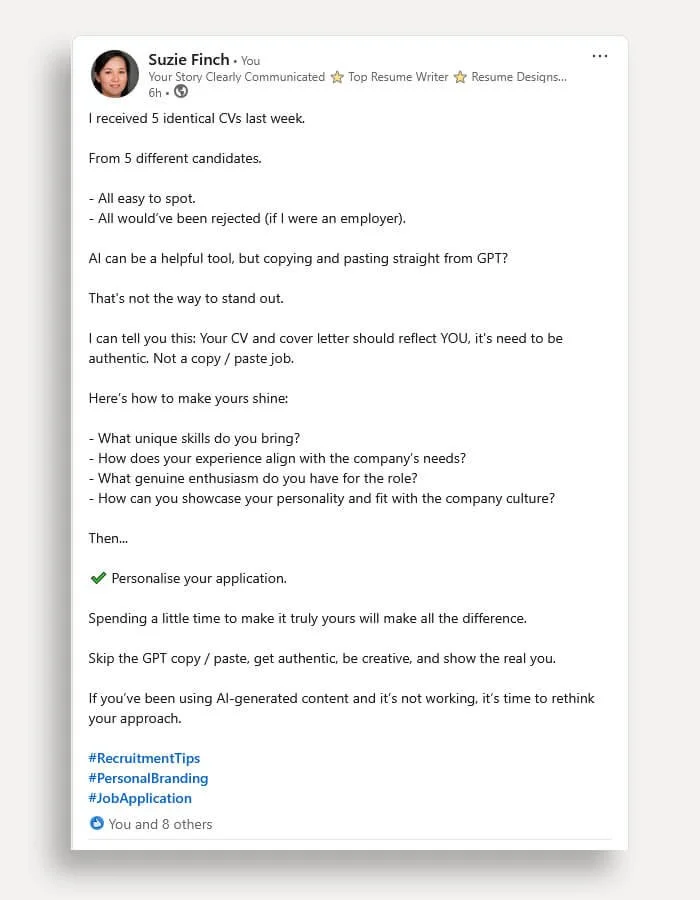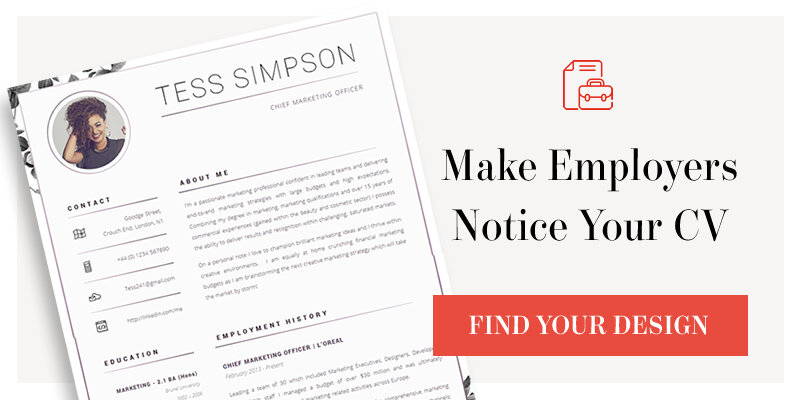There is no doubt about it, Artificial Intelligence (AI) has been a gamechanger and is transforming the way we do all sorts of things, from writing birthday cards (I asked it to write my best friend’s car the other day - don’t judge me) to more obvious uses like job searching.
With just a few simple prompts you can get GPT to craft a CV or cover letters to prepare for interviews and mock up scenarios. Used correctly AI-powered tools offer job seekers a major advantage. But while these tools can speed up the process, they also come with risks. Employers are getting better at spotting AI-generated applications, and relying too heavily on automation can work against you (some things to look out for coming up).
So, how do you make AI work for you without falling into common traps? In this post, we’ll explore how AI can support your job search, where to be cautious, and how to ensure your applications stand out for the right reasons.
What’s In:
Job Description Analysis (& CV Improvements) + Prompts.
Nailing The Interview + Prompts
Career Path Exploration & Planning + Prompts
Overusing AI - What Are The Risks?
A Balanced Approach - Using AI the Authentic Way
Expanding Your Prompts: Other AI Ideas When Job Searching
Final Thoughts
Supercharge Your Job Search With AI…
1. Job Description Analysis (& CV Improvements)
My favourite trick is to analyse job descriptions, by asking tools like Gemini and GPT to provide direct feedback on core requirements allowing you to guage real insight into how to improve your application, CV and more.
One of the key things hiring managers, and recruiters looks for when reviewing your CV is relevancy. The 1-3 page PDF you’ve just submitted (yep, the PDF is the best format for making job applications) is all that stands in the way of you and your securing that move, however if it doesn’t jump off the page as relevant they are just going to move on and consign your details to the ATS dustbin.
AI, plays a vital role in helping you to tie your CV to appear directly relevant to the role you are applying for. With the right prompting it can draw out your key skills and experience, making your details jump off the page and warrant that initial discovery call.
What makes relevant, well obviously hard requirements such as skills and experience, but soft requirements are equally important, are you local, do you drive, does the salary match, does your CV impress (clear structure, no typos).
KEY PROMPTS:
// Job Description Analysis & Tailored CV Enhancements
"Analyse the following job description and break down the core hard and soft skills required. Then, compare these to my CV and suggest specific ways I can enhance it to better align with the role, including keyword optimisation and structure improvements."
👉 Bonus Tip: Paste your CV and job description into the same chat to get direct, side-by-side feedback.
// Relevancy Score & ATS Optimisation
"Evaluate my CV against this job description and provide a 'relevancy score' out of 100. Identify any missing skills, experience, or keywords that could improve my match. Also, highlight any formatting or structural improvements to help it pass through an ATS."
👉 Bonus Tip: Ask AI to rewrite sections using stronger, more impactful wording that mirrors the job spec.
// Customised Cover Letter with Soft Skills Integration
"Write me a tailored cover letter for this job that not only aligns with the hard skills required but also naturally weaves in the soft skills, cultural fit, and logistical aspects (e.g., location, salary expectations, ability to drive). Keep it concise, engaging, and avoid generic fluff."
👉 Bonus Tip: Once AI drafts it, tweak the intro and conclusion to sound more like you - authenticity makes a difference!
2. Nailing The Interview
Practicing job interviews with another human can feel a bit cringe, that’s what I love about AI tools, they can give you that indepth Q&A session, a real brain workout without the judgments or hysterics (depending on who you’re practicing with).
Tools like Gemini or GPT can generate mock interview questions based on a specific job description and even suggest strong responses. It allows you to practice, understand the answers an employer is looking to hear and refine your delivery before having to undergo the real thing.
It’s important to remember that it’s not a memory test, more of a coaching session, the aim is to use AI to help structure your thoughts, so you can then personalise responses with real anecdotes, emotional intelligence, and storytelling that reflects who you are as a candidate. Authenticity is key.
Another factor to consider is the interview presentation (here are some job interview presentation examples for inspiration), use AI to tailor documents to define a clear message, and one that aligns with what you’ve been asked to deliver. An Interview presentation should be a standard part of your interview technique regardles of whether you’ve been asked to produce one or not.
KEY PROMPTS:
// Mock Interview Q&A Session
"Generate a list of 10 common and role-specific interview questions based on the job description for this [specific role]. For each question, provide a sample response that highlights key qualities employers are looking for, as well as tips on how I can personalise these answers with my unique experiences and storytelling."
👉 Bonus Tip: Once AI provides the responses, practice answering out loud to refine your delivery.
// Refining Responses with Real-World Examples
"For the following job description, suggest 5 challenging interview questions I might face. Then, provide coaching on how to structure my responses using STAR (Situation, Task, Action, Result) technique, incorporating real-world examples that reflect my background and skills."
👉 Bonus Tip: Use this prompt to rehearse difficult or uncomfortable questions, as AI will guide you on how to avoid overthinking and focus on your strengths.
// Tailoring Your Interview Presentation (Update Existing PPT)
"I already have an interview presentation prepared for the [specific role], but I’d like to tailor it to better align with the job description and employer expectations. Please review the key points in my existing PowerPoint and suggest improvements to make it more compelling. Focus on refining the messaging to highlight the most relevant skills, ensuring the slides flow well, and making sure the presentation aligns with the employer's key priorities."
👉 Bonus Tip: Ask AI for recommendations on design elements (like font choices, colour schemes, or image suggestions), also consider using colour schemes that align with the employer’s brand.
3. Career Path Exploration & Planning
It can be a confusing process, the job hunt, with so many factors in play it can cause havoc with rational decision making. On the one hand you may be restricted by time constraints or financial strains, or for those without these worries a general sense of overwhelm can grip even the most prepared. It’s been said that “job searching can be a full time job”.
Getting yourself in the right frame of mind, tooled up with a clear career action plan and the right AI prompts will head you in the right direction, enabling your job search to be one of purpose, with all parts pulling in the same direction.
Part of the process is to understand what role you want next, AI tools can suggest potential career paths based on your experience and interests, identify skills gaps, provide excellent insight into opportunities you may not have considered. All great things to explore, but remember AI lacks the real world human intuition and industry knowledge that career coaches, mentors, or even networking conversations can provide. Validate suggestions through research and real-world advice.
KEY PROMPTS:
// Exploring Career Options Based on Your Strengths
"Based on my skills, experience, and interests, suggest career paths I may not have considered. Provide insight into emerging job trends that align with my background, and highlight industries where my skill set could be particularly valuable."
👉 Bonus Tip: Use AI’s suggestions as a starting point, then refine them with real-world research and expert guidance.
// Understanding Skills Gaps & Development Areas
"Review my CV and compare it against job descriptions for [specific role/industry]. Identify key skills that employers prioritise and suggest ways to gain or demonstrate them through experience, projects, or certifications."
👉 Bonus Tip: Once AI highlights the skills gaps, use a structured career planner to map out an action plan.
// AI-Powered Job Search Strategy
"Based on my career goals in [industry/role], suggest a smart job search strategy that includes where to find relevant opportunities, how to position myself effectively, and how to network with the right people. Keep the advice practical and adaptable."
👉 Bonus Tip: Combine AI’s insights with your career planner to create a personalised and structured action plan.
4. Overusing AI - What Are The Risks?
While on the one hand AI can be a useful job search assistant, relying on it too much can be a mistake. Employers are wising up to the subtle signs that differentiate an authentic CV and application from one that was blatently created using AI.
When the same prompts are used by jobseekers applying to the same jobs then AI job applications, turn into instant red flags. For example, this is a real world example taken from a scenario I had just last month.
SO CHECK THIS:
5 identical CVs. From 5 different candidates.
- All easy to spot.
- All would’ve been rejected (if I were an employer).
The only real differences were the names and contact details.
Suzie Finch - LinkedIn - https://www.linkedin.com/in/suziefinch/
So, what can be done to humanise AI generated content I hear you ask? Well, use more AI of course, well that is one option, new tools like Undetectable.ai have emerged to help job seekers refine their AI job application with assisted writing to sound more human. Well, a balanced approach is what’s needed.
5. A Balanced Approach - Using AI The Authentic Way
So with all the tech and tools available at our finger tips, the next question is how can you best leverage AI without falling into traps, you need to create the perfect blend with the aim is to create a seamless approach that looks and sounds authentic, undetectable.
BEST PRACTICES:
// Use AI for ideas, but rewrite, amend and tweak in your own voice. AI can give you a strong foundation, but your application should still sound like you.
// Proof read everything, ask yourself - does it sound authentic as you. A common mistake I see a lot is when people over exagerate their skills and achievements, it tells me immediately “this was created by AI”.
// Customise your applications for each role. Avoid sending the same CV to multiple employers. Personalisation is key.
// Make edits to ensure authenticity. Even if you use AI to generate a CV or cover letter, tweak it to include your real experiences and voice.
// Don’t rely solely on AI for job search success. Networking, research, and direct outreach to employers are just as important.
Remember AI isn’t there to replace the human touch, so instead of trying to ‘beat’ AI detection tools, you should focus on crafting applications that reflect your real skills and experiences. That’s what will truly resonate with hiring managers.
6. Expanding Your Prompts: Other AI Ideas When Job Searching
AI offers you the world at your finger tips, we’ve covered a few mainstream tips but the limit is your imagination. It has the ability to assist you across all other areas of your job search too. For inspiration here are a few more examples…
// Salary Benchmarking & Offer Negotiation
Knowing your worth is crucial when discussing salary expectations. AI can help you compare industry salaries based on location, experience, and job role to ensure you don’t undersell yourself.
PROMPT: "What is the average salary for a [Job Title] with [X] years of experience in [Location]? Provide data from industry reports and salary benchmarking tools."
// LinkedIn Profile Optimisation
A well-crafted LinkedIn profile can increase your chances of recruiters reaching out. Use AI to refine your LinkedIn summary, improve keyword optimisation, and make your profile more engaging.
PROMPT: "Rewrite my LinkedIn summary to highlight my expertise in [Industry], key achievements, and personal brand while keeping it engaging and concise."
// Company & Role Research
Impress in interviews by knowing more than just the basics. AI can summarise key insights on a company, their culture, recent news, and industry trends to strengthen your preparation.
PROMPT: "Provide a company overview for [Company Name], including their recent news, work culture, and key industry trends that might impact their business."
// Networking & Cold Outreach
The right message can turn a cold contact into a valuable connection. AI can help craft personalised LinkedIn or email messages for reaching out to recruiters and industry professionals.
PROMPT: "Draft a LinkedIn message introducing myself to a recruiter at [Company Name]. Mention my interest in [Job Role] and my relevant experience in [Industry]. Keep it professional yet friendly."
// Time Management & Productivity Hacks
Job searching can feel overwhelming without a structured approach. AI can help you break your job hunt into manageable daily or weekly tasks.
PROMPT: "Create a weekly job search schedule that includes CV tailoring, networking, interview prep, and application tracking. Prioritise efficiency and balance to avoid burnout."
Final Thoughts
AI is moving the goal posts, with those that adopt a more advanced strategy gaining a distinct advantage over those who are slow to adapt.
New technology can be daunting, especially when it’s thrust upon you, but with the right amount of tenacity, focus and patience this technology can really open new doors. But remember it isn’t a shortcut to success, it needs to be used correctly to provide you with a smarter way to not only land a job, but land the right job.
So there we have it, how to supercharge your hiring using AI (without getting caught). Thanks for reading and if you still need help be sure to check out our Resume Writing Services.
